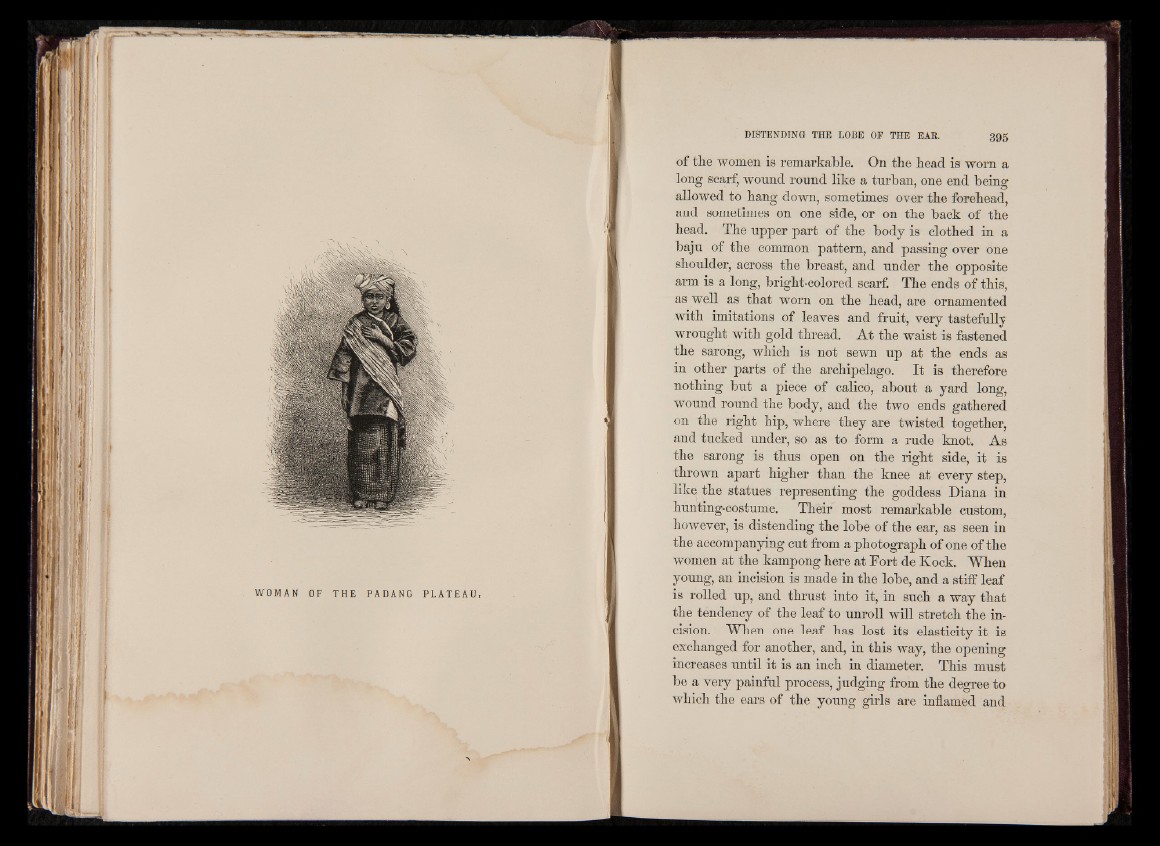
of the women is remarkable. On the bead is worn a
long scarf, wound round like a turban, one end being
allowed to bang down, sometimes over tbe forebead,
and sometimes on one side, or on tbe back of tbe
bead. Tbe upper part of tbe body is clotbed in a
baju of tbe common pattern, and passing over one
shoulder, across tbe breast, and under tbe opposite
arm is a long, bright-colored scarf. Tbe ends of this,
as well as that worn on tbe bead, are ornamented
with imitations of leaves and fruit, very tastefully
wrought with gold thread. At tbe waist is fastened
tbe sarong, which is not sewn up at tbe ends as
in other parts of tbe archipelago. It is therefore
nothing but a piece of calico, about a yard long,
wound round tbe body, and tbe two ends gathered
on tbe right hip, where they are twisted together,
and tucked under, so as to form a rude knot. As
tbe sarong is thus open on tbe right side, it is
thrown apart higher than tbe knee at every step,
like; the statues representing tbe goddess Diana in
bunting-costume. Their most remarkable custom,
however, is distending tbe lobe of tbe ear, as seen in
the accompanying cut from a photograph of one of the
women at tbe kampong here at Fort de Kock. When
young, an incision is made in the lobe, and a stiff leaf
is rolled up, and thrust into it, in such a way that
tbe tendency of tbe leaf to unroll will stretch tbe incision.
When one leaf has lost its elasticity it is
exchanged for another, and, in this way, tbe opening
increases until it is an inch in diameter. This must
be a very painful process, judging from tbe degree to
which tbe ears of tbe young girls are inflamed and